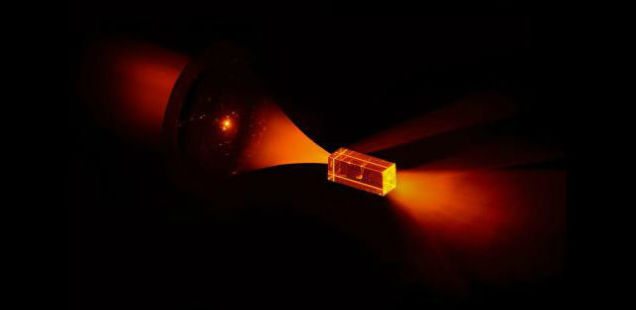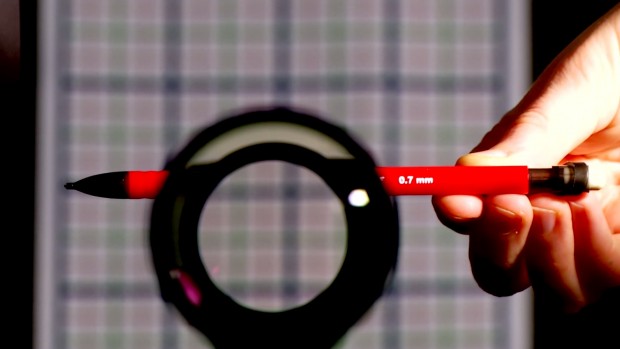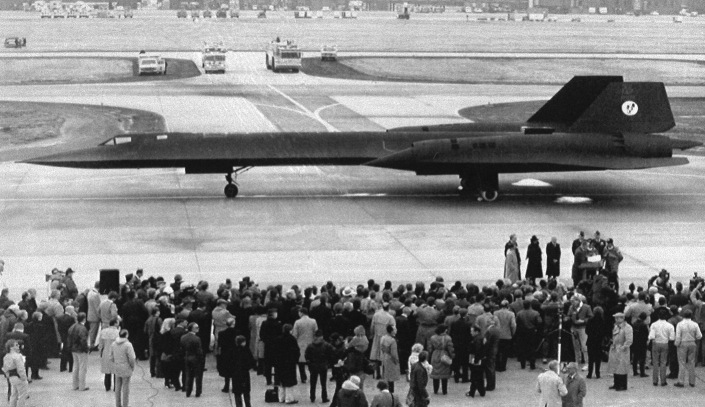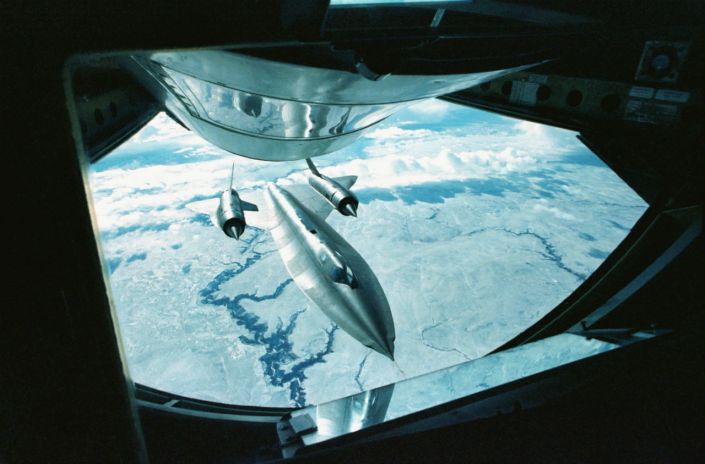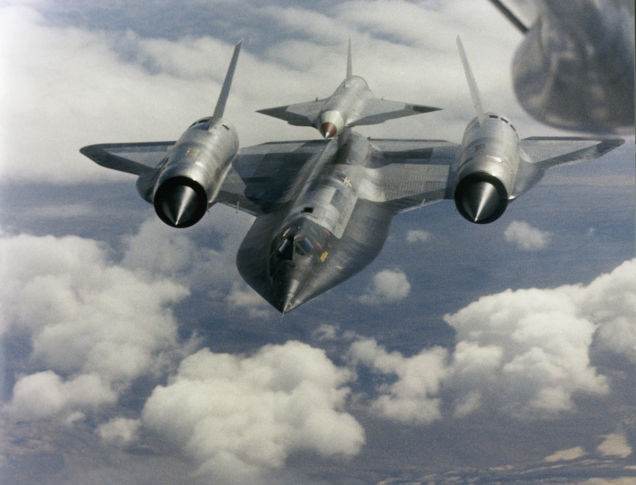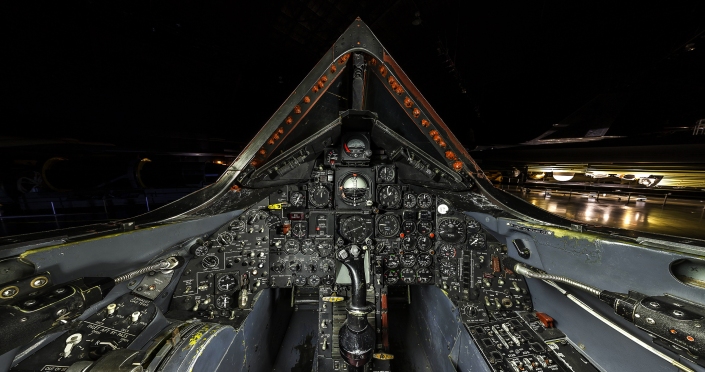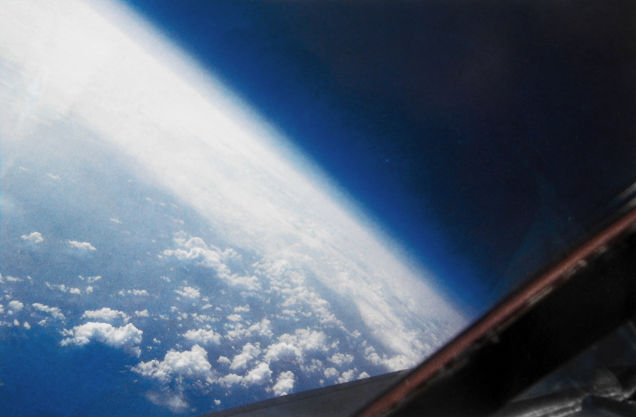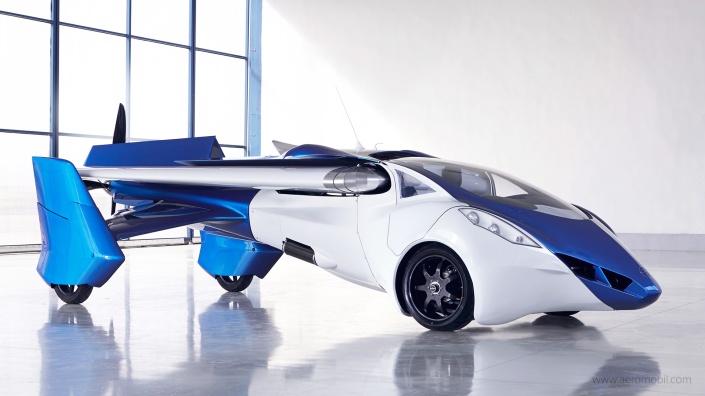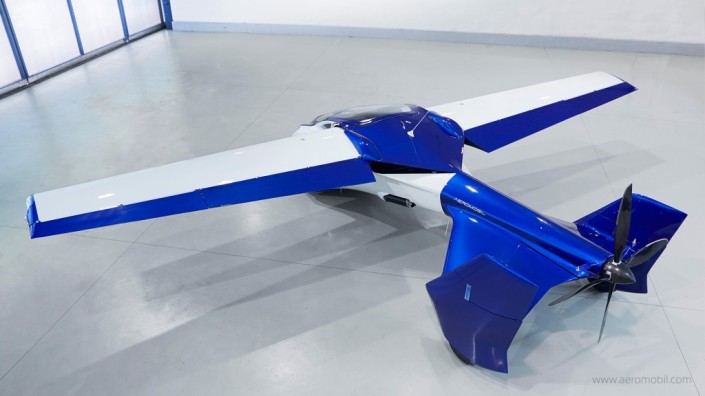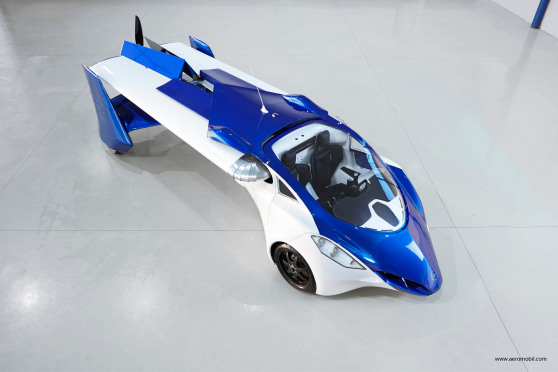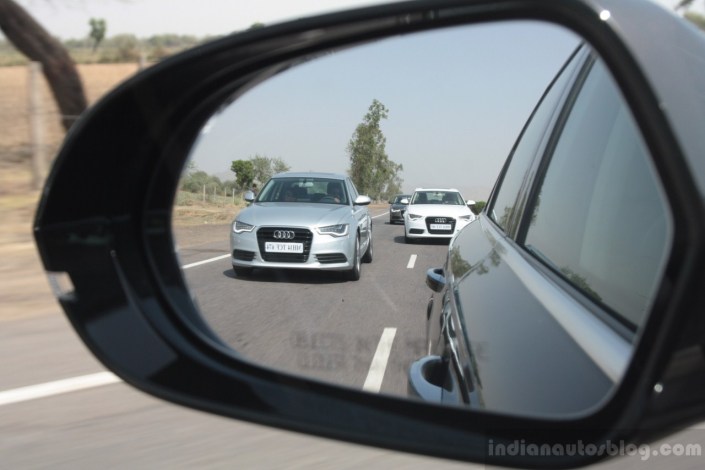Author: sgupta01
How The Moon Got Its Name
Almost every planet in our solar system and their respective orbiting moons have names taken directly from Greek and Roman mythology. For example, Mars is named for the Greek and Roman god of War, also known as Ares, while its moons, Deimos and Phobos are named for his sons. Likewise, Jupiter is named after Zeus while quite a few of its moons are named after certain of his sexual conquests. This tradition is largely true for every planet in our solar system with the singular exception of the moons of Uranus which are named after characters from the plays of Shakespeare.
The only other exception to this naming convention are the decidedly generic sounding names of the Earth and Moon. Since we’ve already explained how the Earth came to be known as such, that just leaves us with why our largest satellite doesn’t have a more colourful name like the moons of the other planets in our solar system.
As it turns out, the Moon did have other names, notable among them, and in keeping with the naming schema of other local celestial bodies, was one taken from the name of an ancient and powerful deity- Luna, the Roman Goddess of the Moon.
Latin in origin, the word “Luna” is still very much associated with the Moon (as is “Selene”, to a lesser extent, the Greek Moon goddess). For instance, “Luna” is noted as being the root of words like “lunar”. However, “Luna” as a name for the Moon is still pre-dated by early derivatives of the word moon.
In any event, when humans discovered there were other planets out there, we still weren’t sure that these planets had their own moons until four of Jupiter’s satellites were directly observed by Galileo Galilei in 1610.
When humanity first learned of other moons orbiting the planets in our solar system, one of the primary reasons they were given names was to differentiate them from the Moon, which, according to theInternational Astronomical Union (IAU), the entity tasked with naming every celestial body in the night sky, is still the official name of our moon in English.
What’s more, the naming of the Moon was one of the first things the IAU did when it was formed in 1919, because to quote them, they wanted: “to standardize the multiple, confusing systems of nomenclature for the Moon that were then in use.”
In regards to why the IAU settled on “Moon” instead of one of the more flamboyant names that existed, they stated that since the Moon was the first known moon, and popularly called something like that for millennia in many languages, it was easier to simply make it official than introduce a new name, since their original goal was to make things easier for people to understand, not harder.
And, of course, “Moon” is actually a pretty cool name, only made less interesting by the fact that we’ve applied it as a generic name for the natural, large satellites of other planets. Had we not done that, “Moon” would have seemed every bit as distinct of a name as “Pluto”, which incidentally was not named after the Disney character, as many have suggested. Although it was named by an 11 year old girl, helping to give legs to the myth about the Disney origin.
This brings us to the origin of the name of Earth’s favourite satellite, “Moon”. The word “moon” can be traced back to Old English, where it is said to have derived from the Proto-Germanic word “menon”, which in turn derived from the Proto-Indo-European “*menses”, meaning “month, moon”. This highlights how far back the association between the Moon and the passage of time goes.
How Human Eyes Evolved From Little Cavities To Utterly Complex Organs
Five hundred million years ago our eyes were only little cavities with the ability to detect the direction of the incoming light. That cavity evolved radically transforming into the complex organs we all know today. But how did this happen? This TedEd video has the scientific answer:
Breakthrough Quantum Hard Drive Holds Data 100 Times Longer
Storing data in a state of quantum entanglement could hold enormous promise for securing our online information, but right now we can only maintain these states for a short time before the entanglement fails. An Australian research team has found a way to store data for hours, not milliseconds: Say hello to the world’s first solid state quantum hard drive.
Conventional quantum networks typically rely on fiber optic cables and lasers to store entangled information. These networks can be up to 100 km in diameter but the laser-based system’s quantum states usually last just a few milliseconds before they collapse. This new hard drive from physicists at ANU and the University of Otago can hold tangled data for up to six hours.
The team essentially created the ROM to the laser-based method’s RAM by embedding an atom of europium (it’s a rare earth element) into a crystal matrix. Quantum information can be “written” into the atom’s spin state using lasers and stored there for hours by then subjecting the crystal a pair of magnetic fields-one fixed, one oscillating-which lock the atom’s spin in place. “The two fields isolate the europium spins and prevent the quantum information leaking away,” Dr Jevon Longdell of the University of Otago said in a press statement.
“We can now imagine storing entangled light in separate crystals and then transporting them to different parts of the network thousands of kilometers apart.” said lead author Manjin Zhong. “We believe it will soon be possible to distribute quantum information between any two points on the globe.”
Should quantum information systems really take off, it could one day lead to a global data encryption network. Since the spin states of two entangled atoms will always match regardless of how far apart they are, this quantum effect would prevent third parties from tampering with the data as any changes to one spin state would be instantly reflected in its partner.
The Stratoliner Was The First Plane To Fly Above The Storm
In the early days of commercial air travel, planes were limited to just 14,000 feet in order to protect their passengers from the the dangers of thin, high altitude flying. But in 1938, Boeing changed the face of commercial air travel with the model 307 Stratoliner, the first commercial airplane to offer a pressurized cabin.
Boeing based the Stratoliner off of its earlier B-17 heavy bomber design from 1935. In fact, the Stratoliner’s wings, tail, rudder, landing gear, and a whole host of other components came directly from the B-17 production line and were tacked onto a circular, pressurized, fuselage 12 feet in diameter. What’s more, the Stratoliner also borrowed the B-17’s four-engine design-another first for domestic air travel. With its powerful engines and sealed cabin, the Stratoliner was able to climb to more than 20,000 feet into the air, thereby flying above low-lying weather patterns and storms. On board, the Stratoliner’s five-man crew and 33 passengers enjoyed a relatively dense atmosphere equivalent to 8,000 feet.
At the time, this was about as baller as air travel could get. Rock star avaiationist Howard Hughes thought so highly of the design that he bought one for himself and converted it into a flying penthouse. Only ten Stratoliners were built in all before the start of the Second World War-five of which were drafted into the Allied effort and converted into C-75 troop transports-and today, only one remains: the Flying Cloud. It currently resides in the Steven F. Udvar-Hazy Center near Washington, D.C.’s Dulles International Airport on permanent display.
Scientists Make Objects “Invisible” With A Tricky Optical Illusion
Invisibility is perhaps the most ubiquitous of sci-fi dreams: Spy movies, video games, and classic cartoons all tantalize us with this trick. Researchers at the University of Rochester still haven’t unlocked the secret to that elusive invisibility cloak either, I’m afraid. But they made a very cool optical illusion that looks the part.
With just a handful of lenses and some complex calculations, this team created an optical setup that bends light waves around a small object. When you look through the system, the object disappears-even if you move your head around. It’s the first 3D system where the background moves the way it should, but the hidden object remains invisible.
Of course, there’s a catch: The illusion only works in a ring around the outer edge of the lens you look through. From 2:00 to 2:07 in the video above, you see how the “hidden” object becomes visible as it passes through the middle of the lens. So we haven’t actually achieved invisibility cloak yet. Sorry. That doesn’t make this optical illusion any less cool.
A Scientifically Accurate Version Of “Twinkle Twinkle Little Star”
“Twinkle Twinkle Little Star” has persisted as a lullaby because it’s sweet and catchy and encourages curiosity and star-gazing. It also doesn’t explain a damn thing about astronomy, something this updated rendition of the traditional ditty strives to correct.
Like a diamond in the sky is pretty imagery but also probably responsible for the objectively false notion that stars are shiny rocks and not luminous plasma.
Written by Henry Reich and Zach Weinersmith, this more accurate version of the song retains its sweetness while informing children and adult children’s song enthusiasts about the importance of adaptive optics. There’s also a book version illustrated by Chris Jones, and you can buy the song on iTunes or Amazon if you’re looking for something educational to throw on during long drives to holiday parties with the kids in the backseat.
Think Exercise: Build Stronger Muscles
Does the desire to build-up strong muscles force you to exercise? Try thinking about exercising once—and see the change in your muscle’s strength. A new study published in journal Neurophysiology reveals that by just thinking about exercising you can make your muscles stronger.
No, we ain’t kidding. The study, which was done by researchers at the Ohio University Heritage College of Osteopathic Medicine, reveals that mental imagery exercises helps muscles become stronger even after not being used for a long time.
In order to test the connection of brain with strength of muscles, the researchers conducted a study for a month on participants with one arm immobilised. The participants performed imagery exercises five times a week. While conducting the study, researchers asked participants to relax their forearm muscles and later told them to imagine contracting their muscles. This was recorded using an electromyogram (EMG).
Clark, who is also the lead author of the study, said, “We wanted to tease out the underlying physiology between the nervous system and muscles to better understand the brain’s role in muscle weakness. What our study suggests is that imagery exercises could be a valuable tool to prevent or slow muscles from becoming weaker when a health problem limits or restricts a person’s mobility.”
The discovery has important implications for patients undergoing neurorehabilitation. For instance: patients who have suffered a stroke. Not only this, it will also help researchers analyze and study the role nervous system can play in muscle weakness.
The legendary SR-71 Blackbird which took it’s first flight 50 years ago
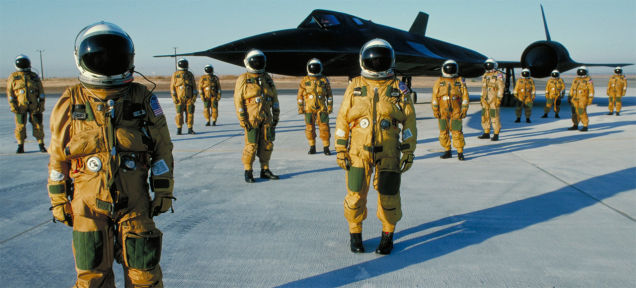
No other plane in history has captured the hearts and minds of the American public quite like the SR-71 Blackbird, providing the West with an unprecedented look behind the Iron Curtain during its 33 year operational career. But before it was cracking the skies over Russia at mach 3.3, the Cold War spy plane had to prove itself during a series of test flights. The first of those took place on December 22, 1964.
Designed by the venerable Lockheed “Skunk Works” group, the SR-71 grew out of the earlier A-12 program and was built to replace the older, slower U-2 spy plane. The Blackbirds, of which 32 were built in total, were tasked with high-speed, high-altitude reconnaissance missions for the US Air Force, usually flying at around 85,000 feet (high enough to require pressurized suits) and traveling at more than twice the speed of sound. This was no easy feat, and over the course of their 33 year operation, a dozen SR-71s were lost.
After the USAF retired the Blackbirds in 1999, two were donated to NASA for use as high-speed test platforms, while the remainder have found their ways to various aviation museums around the country. It remains, however,the world’s fastest airplane.
To celebrate the 50th anniversary of such a huge moment in the SR-71’s life, here’s a cache of images from its storied career:
One SR-71 after its final flight in 1993
The SR-71 in flight (Lockheed Martin)
The SR-71 refueling in mid-flight
The SR-71 carrying its mach 3 recon UAV (Lockheed Martin)
The interior cockpit of an SR-71 (NMUSA)
The view from inside an SR-71 at 85,000 feet. (USAF)
Sorry Guys I couldn’t pot this article on 23rd December the day when this flight took its first flight.
New AeroMobil 3.0 Flying Car Is One Really Cool Transformer
This flying car looks pretty damn cool in both flight and road modes, but especially when it opens up like a transformer. Developed in Europe, theAeroMobil 3.0 has been tested in real flight conditions since October 2014. According to the company, it’s very close to the final product now.
I like the idea of being able to hop around the country using this thingamajig. A flying road trip of sorts. I would still like to get a P-51 Mustang and rent a car wherever I land, but this will do.
The AeroMobil 3.0 prototype is very close to the final product. It is predominantly built from the same materials as the final product, such as advanced composite materials for the body shell, wings, and wheels. It also contains all the main features that will be incorporated into the final product, such as avionics equipment, autopilot and an advanced parachute deployment system.
Why Objects In The Mirror Are Closer Than They Appear
The passenger-side mirror of every modern car in America bears the same warning: “Objects in mirror are closer than they appear.” Ever wondered why? It’s no design fault; it’s actually a safety feature.
The reason behind the warning is a simple matter of physics-and the placement of the passenger-side mirror in relation to the driver’s eye.
When light bounces off of a flat surface, the angle of the reflected light is equivalent to the angle at which it struck the surface. That is, if incoming light hits a flat mirror at a 45-degree angle, your eye has to be at the opposite 45-degree angle in order to see that image. It’s called the “focal point,” and on flat reflective surfaces that point is literally the exact spot that the incoming light strikes the surface.
Automakers have long exploited this physical property of light by making driver-side mirrors flat, as the flat surfaces generate highly accurate reflections-albeit with a smaller focal point and rapidly diminishing viewing angle, the further away you get from the mirror.
Since the driver’s eye is usually only about three feet from the driver-side mirror, it’s not much of an issue. Passenger-side mirrors, on the other hand, are roughly twice that distance from the driver’s glance, and viewed from a severe angle. Were they completely flat-like the driver-side mirror-they would only show a sliver of what was going on on the road, creating a blind spot big enough to hide a Mack truck.
Instead, to compensate for angle and distance, the passenger-side mirror is actually convex in shape-it bulges slightly in the center compared to the edges, like a contact lens. The convex shape extends the focal point so that light striking the curved surface from a wider swath of angles all converge at the same focal point and then bounce into your eye.
But this too comes at a price. While a flat surface generates an accurate reflection at the cost of viewing angle, curved surfaces offer a wider viewing angle at the expense of visual accuracy. Basically, the wider focal point compresses the reflected image, which makes objects appear smaller and farther away than they really are. Hence, the warning.
On the other hand, convex mirrors do a much better job of minimizing blind spots than their flat, aka planar, alternatives. They do such a good job, in fact, that in 2010 the US Department of Transportation began researching whether or not American cars would benefit from using a pair of curved mirrors, just as those in Europe do.
There’s no word yet on whether the US will adopt those standards-I mean, we’re still waiting on the metric system for crying out loud-so until then, make sure to keep repeating the lane-change mantra you were taught in driver’s ed: Rear-view mirror, passenger-side mirror, check over your shoulder.


